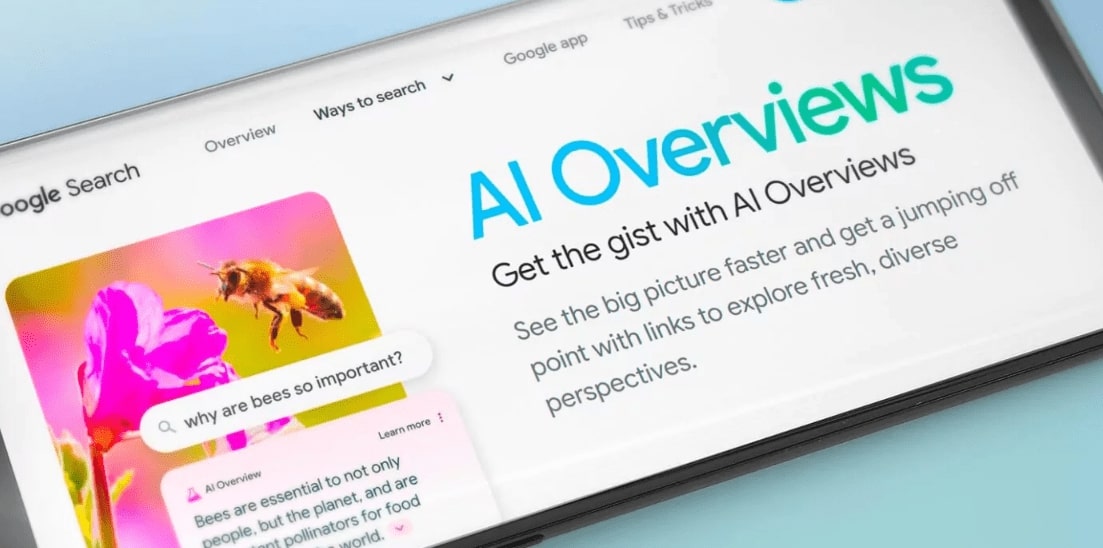Google’s AI-driven search algorithms are changing the SEO game—are you ready to adapt? In recent years, Google’s AI overviews have not only reshaped how businesses approach SEO but also made ranking in search results more challenging—and more rewarding—for those who get it right. But here’s the million-dollar question: What does it actually take to rank in Google’s AI overviews, and how can you adjust your SEO strategy to meet these evolving demands?
If you’re ready to unlock the secrets to ranking higher in Google’s AI-powered search results, then keep reading. In this article, we’ll walk you through the key steps you need to take to succeed, highlighting the critical factors that can make or break your SEO strategy.
How to Rank in Google’s AI Overviews: Structure for AI Readability
One of the fundamental steps in ranking well in Google’s AI overviews is optimizing your content for AI readability. Google’s AI, like BERT (Bidirectional Encoder Representations from Transformers) and MUM (Multitask Unified Model), interprets content contextually, which means your content must be structured in a way that AI can easily process and understand.
Key Steps:
- Clear Headings and Subheadings: Structure your content with H1, H2, and H3 tags to break down information into easily digestible sections. Google’s AI relies on well-structured content to determine relevance and context.
- Concise Paragraphs: Keep your paragraphs short and to the point. Google’s AI likes content that is easy to scan and understand. Avoid long-winded sentences and use bullet points where necessary.
- Semantic Clarity: Use synonyms and related terms. Google’s AI focuses on understanding the meaning behind words rather than just matching keywords. For example, if your article focuses on “SEO for e-commerce,” related terms like “online store optimization” or “SEO for retail websites” can help AI better understand your content’s context.
- Natural Language: Write your content in a natural, conversational style. Google’s AI is trained to understand how humans read and search for information. The more natural your tone, the better Google can understand your content.
By focusing on these aspects of content structure, you are setting the stage for improved rankings in Google’s AI-driven overviews.
Want more help improving your website’s SEO? Learn more about our SEO Services.
How Do You Optimize for Google AI Overview? Use Schema Markup
Google’s AI overviews not only consider the content itself but also how well it is structured and presented. One of the most effective ways to optimize for AI overviews is by using Schema Markup. Schema markup is a form of structured data that helps search engines understand the context of your content.
Why Schema Markup is Crucial:
- Enhanced Visibility: Schema helps your content appear as rich snippets in search results, making it stand out visually.
- Improved AI Understanding: By providing Google’s AI with additional context about your page content, such as ratings, product prices, or event dates, you make it easier for the AI to interpret and display your content in overviews.
- Boost Click-Through Rates (CTR): Rich snippets provide more detailed information in search results, which can lead to higher engagement and traffic.
Common Types of Schema Markup:
- Article Markup: Use this to mark up news articles, blog posts, and tutorials.
- Product Markup: If you’re selling products, ensure you add schema for product details like price, availability, and ratings.
- FAQ Markup: A great way to feature Q&A directly in search results.
For businesses looking to enhance their online presence, incorporating schema markup into their SEO strategy can drastically improve how Google’s AI interprets and presents their content.
How to Rank in Google’s AI Overviews: Build Topic Clusters
Another important strategy for ranking in Google’s AI overviews is building Topic Clusters. A topic cluster is a content strategy where a main pillar page is linked to several related subtopics, creating a network of interlinked content. Why Topic Clusters Matter:
- AI Readability: Google’s AI is increasingly focused on the relevance of related content. Topic clusters help AI understand the broader context of your content, improving its chances of appearing in overviews.
- Improved Internal Linking: By grouping content around a central theme, you can strategically use internal links to drive traffic and boost SEO performance.
- Enhanced Authority: Google values comprehensive, well-researched content. By linking relevant articles, you build your authority on a subject, making it more likely your content will rank in AI overviews.
Example: A website about “digital marketing” could have a pillar page dedicated to the topic and several subtopics linked to it, such as “SEO strategies”, “Content marketing tips”, and “Google Ads optimization”.
Use Examples & Citations for Ranking in Google’s AI Overviews
Google’s AI systems are designed to understand content in a more human-like way, and one of the best ways to optimize for AI overviews is by using examples and citations in your content.
Why Examples and Citations Matter:
- Prove Authority: Citing credible sources or using examples from recognized experts signals to Google’s AI that your content is trustworthy.
- Increase Content Relevance: Providing real-world examples helps AI understand the practical applications of your content, which increases the likelihood of it appearing in relevant search results.
- Improve Engagement: Users are more likely to engage with content that includes real-world examples or citations that back up claims. This increased engagement can lead to higher rankings in AI-driven overviews.
When citing sources, be sure to reference reputable publications, studies, or case studies relevant to your industry, and always link to the source.
Is SEO worth it for your business? Find out more in our article about Is SEO Worth It?.
Match Intent & Front-Load Answers for Ranking in Google’s AI Overviews
Google’s AI systems have become excellent at understanding searcher intent. One of the most effective ways to rank in AI-driven overviews is to match user intent and provide immediate answers to common questions.
How to Match Intent:
- Identify Search Intent: Determine whether a user is looking for informational, transactional, or navigational content. Tailor your content to meet these needs.
- Front-load Answers: Provide answers to key questions near the beginning of your content, making it easy for Google’s AI to extract your page for overviews. If users are looking for quick answers, front-loading your content helps both human readers and AI to get to the point faster.
For example, if users are searching for “how to rank in Google’s AI overviews,” include a concise answer at the beginning of your article, followed by detailed explanations later.
Let Experts Optimize Your Content for AI Overviews
While DIY SEO is certainly possible, optimizing content for Google’s AI-driven overviews is a specialized task that requires expertise. Working with experienced professionals can ensure your content is tailored to meet the latest AI algorithms and SEO best practices.
HDM Agency is here to help you create content that not only meets SEO standards but also ranks high in Google’s AI overviews. Our expert team specializes in crafting SEO-optimized, AI-friendly content that drives results. Whether you need help with content creation, schema markup implementation, or building topic clusters, our team has the knowledge and expertise to elevate your digital presence.
Contact HDM Agency today to learn more about our services and how we can optimize your content for Google’s AI overviews!
Conclusion
Ranking in Google’s AI overviews requires more than just traditional SEO strategies. You need to focus on creating high-quality, relevant content that is structured, optimized, and easy for AI to understand. By implementing schema markup, building topic clusters, using examples and citations, and matching user intent, you can significantly improve your chances of ranking in Google’s AI-driven overviews.
For businesses looking to stay ahead of the curve in the ever-evolving digital landscape, it’s essential to adapt to these changes. If you need help optimizing your content for AI overviews, contact HDM Agency today and take the first step toward improving your online presence.








